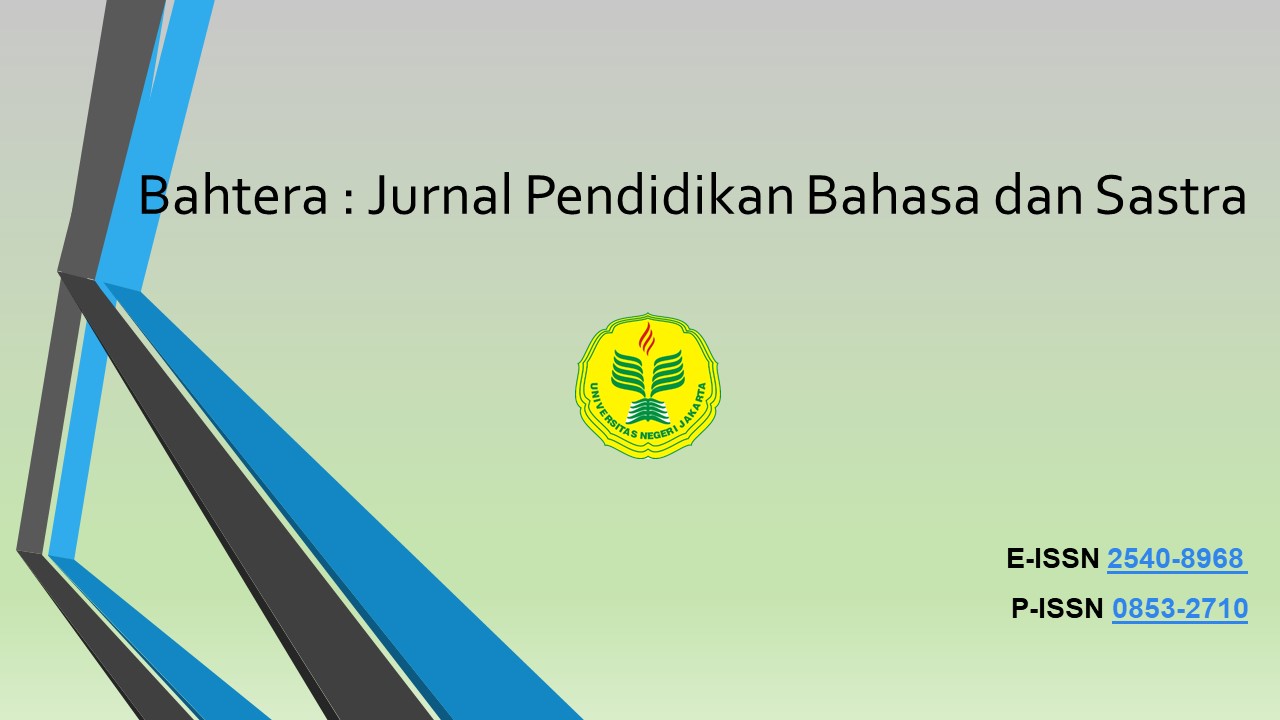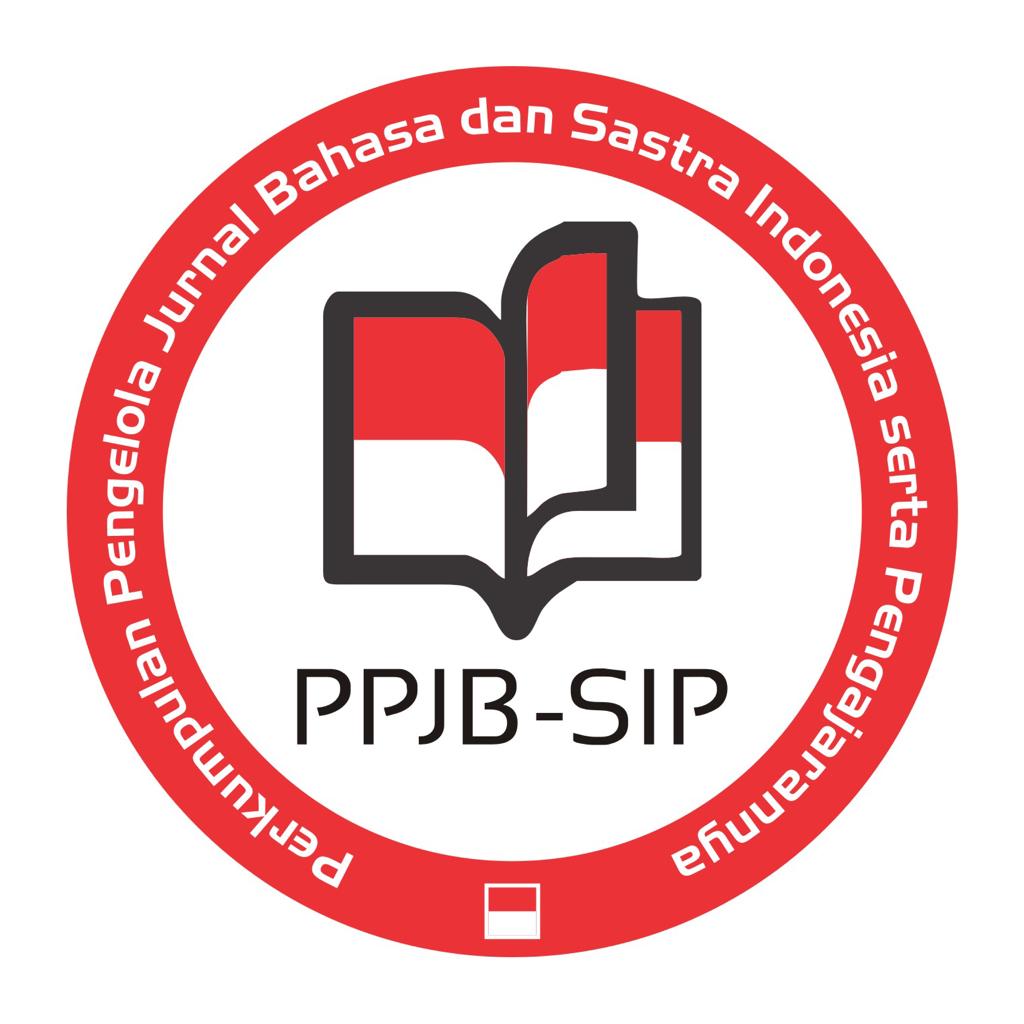Pemanfaatan Laman Let’s Read Kategori Cerita Rakyat sebagai Media Pembelajaran Inovatif BIPA Keterampilan Membaca
DOI:
https://doi.org/10.21009/bahtera.232.02Keywords:
Let’s Read, Folklore, Innovative Learning, BIPA, Reading SkillsAbstract
The era of digitalization has caused learning activities to be increasingly integrated with technology. This is based on the many learning pages that can support learning objectives, one of which is the Let's Read page. This page can be used as a BIPA learning medium because the characteristics of the reading in it are appropriate to the level of knowledge of BIPA students. This research aims to analyze three forms of use of the Let's Read page in the folklore category as an innovative BIPA learning medium for reading skills. The three forms referred to are as a means of mastering vocabulary, a source of innovative reading, a means of introducing Indonesian culture and literature. The method used in this research is descriptive qualitative. This research data is in the form of sentences from interviews with BIPA students as well as the results of researchers' analysis of the Let's Read page. Data collection was carried out through interviews and observations. The research results show that the Let's Read page in the folklore category can be used as an innovative BIPA learning medium for reading skills.
References
Hidayatullah, S., Mulyati, Y., Damaianti, V. S., & Permadi, T. (2023). Analisis Kesesuaian Media Cerita Rakyat Digital dengan Kebutuhan Literasi Emergen. Jurnal Obsesi : Jurnal Pendidikan Anak Usia Dini, 7(5), 5269–5282. https://doi.org/10.31004/obsesi.v7i5.5000
Kayati, A. N. (2022). Pemanfaatan teks multimodal dalam pembelajaran bahasa Indonesia untuk penguatan literasi peserta didik. SANDIBASA I (Seminar Nasional Pendidikan Bahasa Dan Sastra Indonesia I), 4(April), 385–398. https://ojs.mahadewa.ac.id/index.php/sandibasa/article/view/2028
Kusmiatun, A. (2018). Cerita Rakyat Indonesia Sebagai Materi Pembelajaran Bipa: Mengusung Masa Lalu Untuk Pembelajaran Bipa Masa Depan. Diksi, 26(1), 24–28.
Maharani, L. P. S., & Rati, N. W. (2022). Dictor Caksanta: Membentuk Karakter Siswa dengan Dongeng Digital Berbasis Cerita Rakyat Indonesia. Mimbar Ilmu, 27(2), 300–310. https://doi.org/10.23887/mi.v27i2.48735
Ramadhania, A. D., Karim, A. A., Wardani, A. I., Ismawati, I., & Zackyan, B. C. (2022). Revitalisasi Sasakala Kaliwedi ke dalam Komik sebagai Upaya Konservasi Cerita Rakyat Karawang. Edukatif : Jurnal Ilmu Pendidikan, 4(3), 3638–3651. https://doi.org/10.31004/edukatif.v4i3.2655
Saputra, M. H. S., Retno, R. S., & Laksana, M. S. . (2023). Pengaruh penggunaan aplikasi let ’ s read terhadap minat baca pada pembelajaran bahasa indonesia siswa kelas v sekolah dasar. 4. https://doi.org/https://prosiding.unipama.ac.id/index.php/KID
Siahaan, L., Wiranata, V., Zai, K., & Nasution, J. (2023). Keterampilan Membaca Pada Pengajaran Bipa Menggunakan Media Digitalisasi. Journal of Science and Social Research, 6(1), 160. https://doi.org/10.54314/jssr.v6i1.1186
Sudaryanto. (2015). Metode dan Aneka Teknik Analisis Bahasa. Yogyakrta: Sanata Dharma University Press.
Suhita, S., & Purwahida, R. (2018). Apresiasi Sastra Indonesia dan Pembelajarannya. Bandung: Remaja Rosdakarya.
Vira Amelia, Darmansyah, & Yanti Fitria. (2023). Pemanfaatan Platform Let’s Read Dalam Mendukung Kegiatan Literasi Siswa. Pendas : Jurnal Ilmiah Pendidikan Dasar, Volume 08, 2548–6950.
Winda Rizky Fatma Sari, & Gusthini, M. (2023). Analisis Strategi Penerjemahan Istilah Budaya pada Buku Cerita Anak dari Platform Let’s Read Asia. Jurnal Humaya: Jurnal Hukum, Humaniora, Masyarakat, Dan Budaya, 3(1), 49–60. https://doi.org/10.33830/humaya.v3i1.4128
Downloads
Published
How to Cite
Issue
Section
License
Copyright (c) 2024 Bahtera: Jurnal Pendidikan Bahasa dan Sastra

This work is licensed under a Creative Commons Attribution 4.0 International License.
License & Copyright
This work is licensed under a Creative Commons Attribution 4.0 International License.










